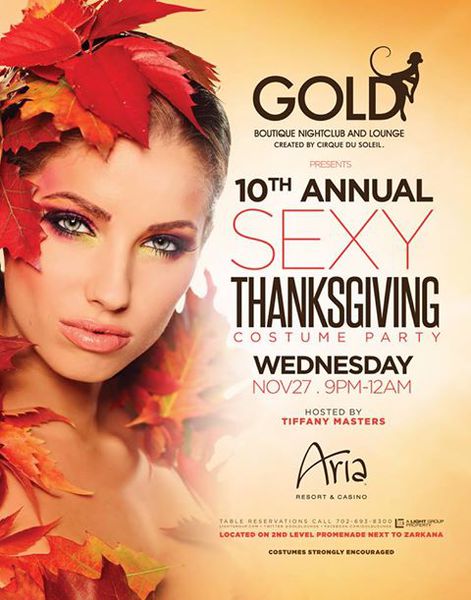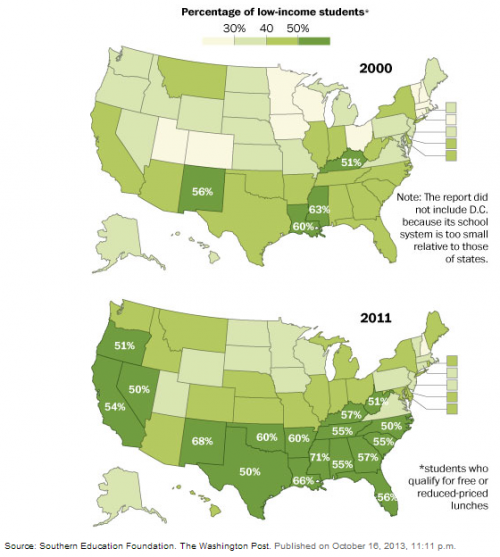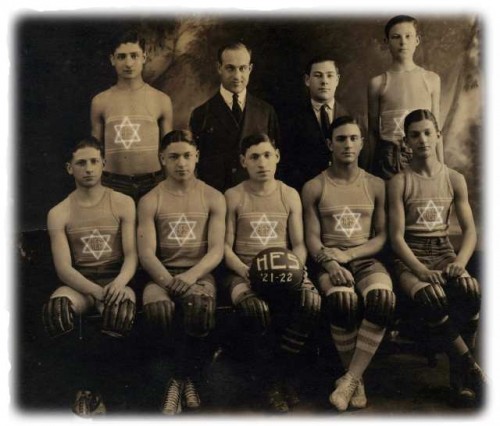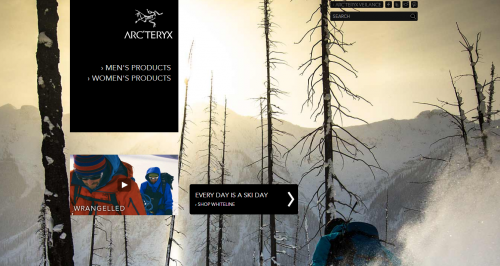- Demystifying Commodities
- Ritualized Consumption Dances
- The Economy of Christmas (pictured)
- EBay Transactions on Black Friday 2009
- Discourse and “Doorbuster” Sales
This lady is apparently going as Sexy Leaf Pile. What would you go as?
Lisa Wade, PhD is an Associate Professor at Tulane University. She is the author of American Hookup, a book about college sexual culture; a textbook about gender; and a forthcoming introductory text: Terrible Magnificent Sociology. You can follow her on Twitter and Instagram.Theorizing Thanksgiving:
Some Fun History:
- Thanksgiving: The First TV Dinner
- For a “Wholesome” Thanksgiving, Choose Seagrams
- Suffragettes Delay Thanksgiving Dinner
Cigarette Advertising, on this Holiday:
Thanksgiving, Race, and Gender:
Lisa Wade, PhD is an Associate Professor at Tulane University. She is the author of American Hookup, a book about college sexual culture; a textbook about gender; and a forthcoming introductory text: Terrible Magnificent Sociology. You can follow her on Twitter and Instagram.Privilege comes in many forms: class privilege, white privilege, male privilege, heterosexual privilege and so on. Being privileged means that you “fit” in the society in which you live and reap rewards by virtue of just being.
Recognizing privilege isn’t just a matter of being thoughtful or empathetic, it usually involves sacrificing something. Sometimes it’s something big (like the belief that your success is due entirely to your talents and hard work) and sometimes it’s something small.
The person who sent this confession to PostSecret is admitting to feeling frustrated by giving up one of those small benefits that come with privilege:
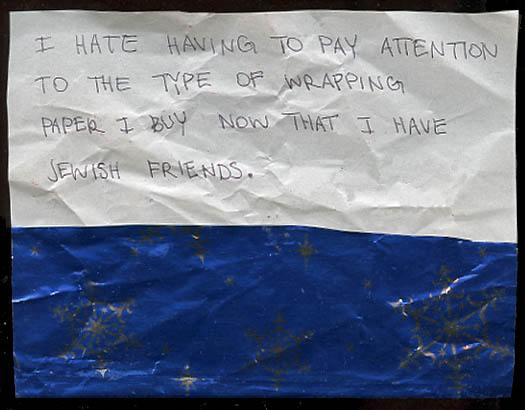
Originally posted in 2009.
A new study has discovered that 48% of the nation’s 50 million public school students are in poverty, as measured by whether they qualify for free or reduced-priced lunches. In 17 states, the majority of schoolchildren are poor. Poverty rates are led by Mississippi, where 71% of children are in poverty.
These data represent a startling rise since 2000:
While the statistics are the worst for states in the South and the West, the percent increase in poor children was the highest in the Midwest (up 40% since 2001, compared to 33% in the South, 31% in the West, and 21% in the Northeast). All, of course, extraordinary increases.
h/t @Miel_Machetes. Cross-posted at Pacific Standard.
Lisa Wade, PhD is an Associate Professor at Tulane University. She is the author of American Hookup, a book about college sexual culture; a textbook about gender; and a forthcoming introductory text: Terrible Magnificent Sociology. You can follow her on Twitter and Instagram.Kids growing up in dense, urban environments often turn to basketball as their sport of choice. This is partly because it fits, in a physical sense. All things being equal, a basketball court takes up a lot less room than a football or soccer field. For the economically disadvantaged, it’s also relatively cheap to play. If you have a court available, you only need a pair of shoes and a ball. For this reason, whatever population finds itself in this type of environment tends to take up basketball.
That’s why the sport was dominated by Jews in the first half of the 1900s. Just like many African-Americans today, at that time many immigrant Jewish families found themselves isolated in inner cities. Basketball seemed like a way out. “It was absolutely a way out of the ghetto,” explained retired ball player Dave Dabrow. Basketball scholarships were one of the few ways low income urban Jews could afford college.
Jewish basketball team (1921-22):
Today we refer to stereotypes about Black men to explain why they dominate basketball, but this is an after-the-fact justification. At the time, very different characteristics — stereotypes associated with Jews — were used to explain why they dominated professional teams. Paul Gallico, sports editor of the NY Daily News in the 1930s, explained that “the game places a premium on an alert, scheming mind, flashy trickiness, artful dodging and general smart aleckness.” All stereotypes about Jews. Moreover, he argued, Jews were rather short and so had “God-given better balance and speed.” Yep. There was a time when we thought being short was an advantage in the sport of basketball.
Never underestimate the power of institutions and how much things can change.
New York Knicks (1946-1947):
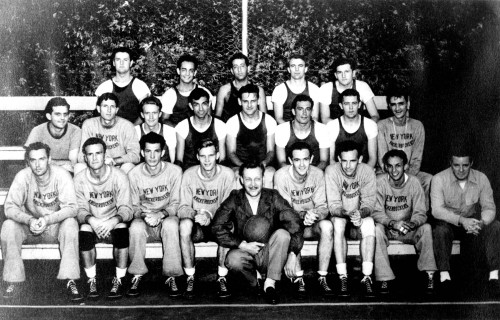 Cross-posted at Pacific Standard.
Cross-posted at Pacific Standard.
Lisa Wade, PhD is an Associate Professor at Tulane University. She is the author of American Hookup, a book about college sexual culture; a textbook about gender; and a forthcoming introductory text: Terrible Magnificent Sociology. You can follow her on Twitter and Instagram.
We’ve highlighted the ways in which society portrays men as people and women as women many times over. So many times, in fact, that we started a Pinterest collection. There are two scenarios in which men are the default person: (1) masculine spaces, like the workplace and politics, and (2) neutral spaces that aren’t associated with men or women, like museums and the internet.
When something is distinctly feminized, however, things flip. @jessimckenzi and @freedenoeur forwarded us a pointed example: a brand of lotion called “everyone.” Everyone lotion comes in two types: everyone lotion “for everyone and every body” and everyone lotion for men:
 This practice reminds us who belongs where by making one gender or the other the neutral participant and then adding a modifier in order to selectively include the other sex. Another example of this phenomenon is the masculinizing of feminine products in order to sell them to men and the feminizing of masculine products to sell them to women. Together these practices affirm and naturalize gender-based segregation in our social spaces and activities.
This practice reminds us who belongs where by making one gender or the other the neutral participant and then adding a modifier in order to selectively include the other sex. Another example of this phenomenon is the masculinizing of feminine products in order to sell them to men and the feminizing of masculine products to sell them to women. Together these practices affirm and naturalize gender-based segregation in our social spaces and activities.
This summer I went hiking several times in California’s Eastern Sierra. Each time I went I counted the number of male to female hikers and ended up with a 5:1 ratio. This reflects many women’s experience of the wilderness and outdoor sports such as rock climbing or mountaineering. These are male-dominated arenas.
One of the reasons for that is because these activities are advertised to women as an escape from their stressful lives, not as a sport meant to challenge their physical ability. Outdoors equipment marketed towards women, then, consistently focuses on comfort and style, in contrast to men’s marketing. Moreover, much of the gear that is produced for women assumes less of a desire to do activities that are as physically demanding as men — the gear is often less hardy and more decorative. The assumptions behind these marketing strategies reinforce stereotypical ideas of gender: that women are physically weak, that women are fascinated by fashion, that there is one specific female body type, and that women are “soft.”
Exhibit #1: Women’s backpacks
Osprey is generally acknowledged as the maker of the best backpacks for hiking and backpacking. Their top-of-the-line backpack for long multi-day backpack trips for men, the Xenith, can hold 105 L and between 60-80 lbs. The women’s pack, the Xena, on the other hand, can hold 85 L and between 50-70 lbs. This is because the women’s pack is shorter. Osprey is betting that most women have a shorter torso and thus need a shorter pack. While this might be true for some women, they could attempt to engineer another type of pack that would allow women to carry the same poundage as men. Moreover, it is unclear why these packs are labeled “men’s and women’s.” Plenty of women have longer torsos and men shorter ones. And, indeed, on backpacking forums on the internet, you constantly see stories of people buying gear of the “wrong sex” so that it actually fits.
Exhibit #2: Choose your sex!
Many hikers and backpackers buy gear online and oftentimes the structure of the websites of the major companies who sell gear reveals the companies’ assumptions about the interests of their consumers. Some, such as Arc’teryx, open their websites with gender distinctions. One must choose men’s or women’s products immediately upon going to their site. Other companies, such as REI, open their site with the opportunity to choose an activity, such as hiking, climbing, cycling, running, etc. or sex category, which is better. By so dividing their products, Arc’teryx is making it harder for those who need to buy gear from the “wrong” sex or to market unisex gear while REI is making consumers feel part of a larger community of climbers or backpackers or hikers.
Exhibit #3: Playful gear
The marketing of backpacking gear is itself highly gendered, with women’s gear being presented as comfortable and stylish. Oddly, it is not marketed with an eye towards serious wilderness excursions. Take, for example, the Yumalina pant manufactured by Mountain Hardwear. The men’s version is described as “Durable softshell seriously protects on the outside, while lightweight fleece on the inside keeps you warm on those chilly hikes” while the women’s version is described as “Serious on the outside and soft on fuzzy on the inside. Perfect for work or play during the winter.” The women’s pant is thus not seen as for someone who is serious about backpacking.
Exhibit #4: Decorative, sexy climbing
The naming and color palette of much women’s gear also reflects the idea in the backpacking industry that women needed to be treated delicately. Black Diamond, which manufactures popular rock climbing harnesses, has named their women’s harnesses “Primrose,” “Siren,” “Aura,” and “Lotus,” emphasizing the stereotypical connection between women and flowers and sexuality. Women are connected to passive agents. The harnesses themselves are typically in pastel colors as well. This is in contrast to the men’s harnesses, which are named “Chaos,” “Focus,” “Flight,” and “Momentum,” which are strikingly active words in comparison and are designed in bright, bold colors.
As Brendan Leonard points out in his post, Girly Girls and Manly Men, “No company feels like they have to do anything special to men’s gear, or ‘masculinize it’ it. Yoga is arguably maybe the most feminine (or just female-dominated) of any active pursuit, but you don’t see any companies making yoga mats with patterns on them that look like cascades of hammers or football helmets or beer mugs, to encourage men by saying, ‘It’s OK, dude. You can own one of these and still love Home Depot.’” Why do companies thus feel that women cannot be serious backpackers, hikers or climbers without feminized gear?
Cross-posted at The Huffington Post.
Adrianne Wadewitz, PhD is a Mellon Digital Scholarship Postdoctoral Fellow at Occidental College specializing in emerging media from the 18th-century to the present. Peter James is an avid outdoor photographer and wilderness traveler. You can follow them at @wadewitz and @PBJmaesPhoto.


